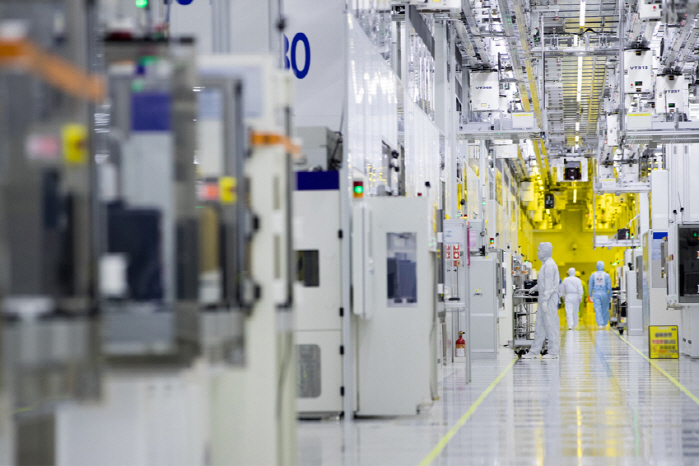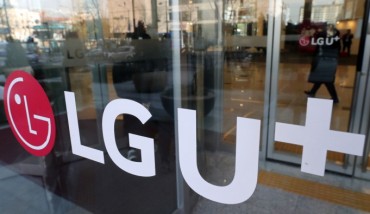
A cleanroom in a Samsung Electronics semiconductor production facility in Suwon, Gyeonggi Province. (image: Samsung Electronics)
SEOUL, June 22 (Korea Bizwire) — Samsung Electronics Co. and SK hynix Inc., the world’s two largest memory chip makers, have begun renegotiating with their primary clients as the average selling price (ASP) for DRAM approaches production cost.
The two companies have set the price limit at US$1.40 and notified clients that the price cannot go any lower.
These manufacturers are returning to price negotiations based on the belief that the price of memory semiconductors has underperformed against the market outlook.
In fact, DRAM stocks have been stabilizing since the second quarter, with chip demand expected to rise in autumn, allowing the companies to abandon the idea of a “clearance sale.”
According to DRAMeXchange, the price of DDR4 8Gb 1Gx8 2133Mhz had dropped by 3.45 percent by the end of May.
Compared to the previous price drop of 18 to 20 percent for each supply since October of last year, the decrease has become less severe.
This indicates that DRAM manufacturers are beginning to address the significant price drops.
Samsung and SK hynix’s leverage over price negotiations began to weaken late last year.
To reduce surplus stock caused by stagnating demand, three companies, including U.S. chipmaker Micron Technology, engaged in a fierce discount competition, resulting in a double-digit price drop rate each quarter.
Now, Samsung and SK hynix are shifting away from desperate attempts to lower the price and returning to price negotiations, likely due to the stabilization of semiconductor stocks.
Since last year, SK hynix and Micron, the second and third largest manufacturers in the industry, focused on products with lower profitability to reduce production.
Samsung, the industry’s top manufacturer, joined the reduction efforts in April of this year.
DRAM products commonly take three to six months to go from wafer input to production, so the reduction effects will begin to show in the upcoming third quarter.
Production quantities will align with the speed of demand recovery.
H. M. Kang (hmkang@koreabizwire.com)






